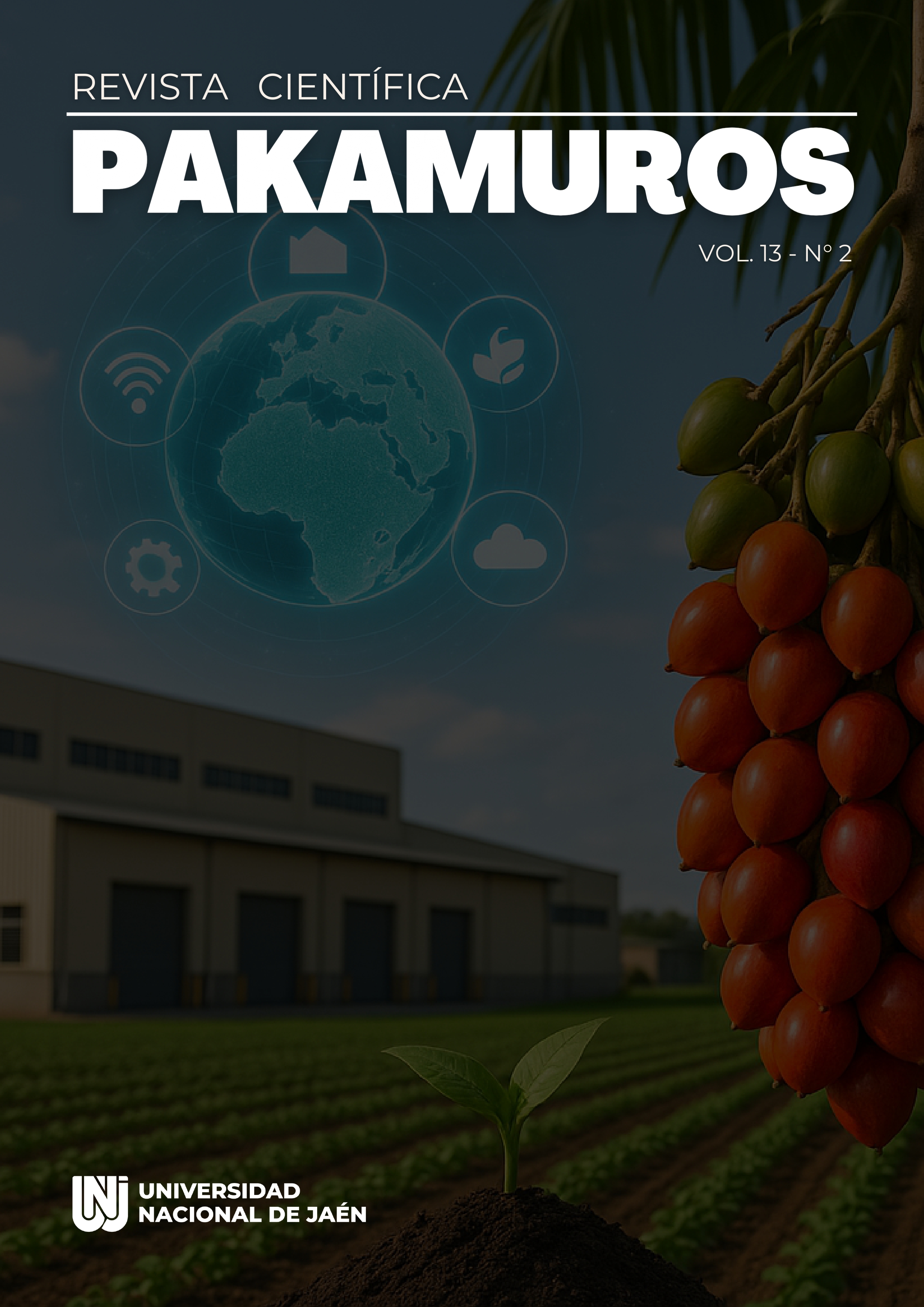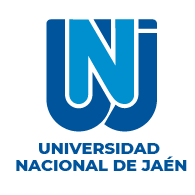Análisis del valor de pasteurización de puré de camote, mediante simulación numérica y pruebas experimentales
DOI:
https://doi.org/10.37787/7j0fze91Palabras clave:
pasteurización, tratamiento térmico, simulación térmica, distribución de calor, transferencia térmicalResumen
En esta investigación se realizó una simulación numérica del tratamiento térmico y pasteurización de puré de camote, enfocándose en la distribución de calor en diferentes ubicaciones del baño maría (centro, izquierda y derecha). Se identificó que la posición central presentó la mayor velocidad de calentamiento (fh = 47,0521 min). El puré se elaboró a partir de la pulpa del camote y se determinó que el punto más lento en calentarse fue el centro geométrico del recipiente cilíndrico de vidrio. Al comparar los resultados experimentales con la simulación por elementos finitos, se observaron pequeñas discrepancias en los valores del factor de retraso (jh) con una variación de Δ = 0,0235 y del fh con Δ = 0,7 min. Sin embargo, el coeficiente de determinación R² cercano a 1 y un error cuadrático medio de 1,063 °C indicaron una buena precisión en las predicciones. Se encontraron diferencias significativas (p < 0,05) en la posición central, pero no en los laterales. Finalmente, al comparar dos formulaciones T1 (puré puro) y T2 (puré con 0,075% de CMC y 0,075% de almidón de maíz) se identificaron diferencias sensoriales en color, consistencia, aroma y sabor, aunque algunos atributos resultaron similares.
Referencias
Ayala, L., & Angel, S. (2017). “Tratamiento térmico y modelamiento matemático del concentrado de tomate (Lycopersicon esculentum Mill) en envase de hojalata y de vidrio”. Universidad Nacional del Callao.
Bornhorst, E. R., Liu, F., Tang, J., Sablani, S. S., & Barbosa-Cánovas, G. V. (2017). Food quality evaluation using model foods: A comparison study between microwave-assisted and conventional thermal pasteurization processes. Food and Bioprocess Technology, 10(7), 1248–1256. https://doi.org/10.1007/s11947-017-1900-9
Condori, M., Obregón, A. J., & Guevara, A. (2012). Evaluación y optimización del tratamiento térmico de conservas de habas verdes (Vicia Faba L.) en salmuera. Ciencia e Investigación, 15(2), 84–89. https://doi.org/10.15381/ci.v15i2.2663
da Silva, W. P., de Medeiros, M. S., Gomes, J. P., & e Silva, C. M. D. P. S. (2020). Improvement of methodology for determining local thermal diffusivity and heating time of green coconut pulp during its pasteurization. Journal of Food Engineering, 285(110104), 110104. https://doi.org/10.1016/j.jfoodeng.2020.110104
da Silva, W. P., de Ataíde, J. S. P., de Oliveira, M. E. G., e Silva, C. M. D. P. S., & Nunes, J. S. (2018). Heat transfer during pasteurization of fruit pulps stored in containers with arbitrary geometries obtained through revolution of flat areas. Journal of Food Engineering, 217, 58–67. https://doi.org/10.1016/j.jfoodeng.2017.08.012
de Oliveira, C. S., Bet, C. D., Bisinella, R. Z. B., Waiga, L. H., Colman, T. A. D., & Schnitzler, E. (2018). Heat-moisture treatment (HMT) on blends from potato starch (PS) and sweet potato starch (SPS). Journal of Thermal Analysis and Calorimetry, 133(3), 1491–1498. https://doi.org/10.1007/s10973-018-7196-9
Farazbakht, F., Zamindar, N., Hojjatoleslamy, M., & Toghraie, D. (2017). Numerical simulation of transient heat transfer for tomato paste in semi rigid aluminum container. Journal of Food Measurement & Characterization, 11(2), 479–487. https://doi.org/10.1007/s11694-016- 9415-z
Hemamanjushree, S., & Tippavajhala, V. K. (2020). Simulation of unit operations in formulation development of tablets using computational fluid dynamics. AAPS PharmSciTech, 21(3), 103. https://doi.org/10.1208/s12249-020-1635-1
Jafri, M., Jha, A., Rasane, P., & Sharma, N. (2015). Development of a process for the manufacture of shelf stable dhal and its physico-chemical properties. Journal of Food Science and Technology, 52(9), 5709–5717. https://doi.org/10.1007/s13197-014-1586-1
Kosky, P., Balmer, R., Keat, W., & Wise, G. (2013). Mechanical Engineering. Exploring Engineering, 259–281. https://doi.org/10.1016/B978-0-12-415891-7.00012-1
Khurshida, S., & Deka, S. C. (2022). Application of microwave and hydrothermal treatments for modification of cassava starch of Manipur region, India and development of cookies. Journal of Food Science and Technology, 59(1), 344–354. https://doi.org/10.1007/s13197-021-05020-9
Li, Y., Zhang, Z., Hao, X. y Yin, W. (2018). A Measurement System for Time Constant of Thermocouple Sensor Based on High Temperature Furnace. Applied Sciences, 8, 2585. https://doi.org/10.3390/app8122585
Li, S., Yan, Y., Guan, X., & Huang, K. (2020). Preparation of a hordein-quercetin- chitosan antioxidant electrospun nanofibre film for food packaging and improvement of the film hydrophobic properties by heat treatment. Food Packaging and Shelf Life, 23(100466), 100466. https://doi.org/10.1016/j.fpsl.2020.100466
Pisco, M., & Francisco, J. (2020). Determinación de la difusividad térmica y perfiles de temperatura de la papa (Solanum tuberosum) durante el calentamiento en un medio líquido. Universidad Nacional Agraria La Molina.
Nedanami, A., Ziaiifar, A. M., Parvini, M., Kashaninejad, M., & Maghsoudlou, Y. (2018). Numerical calculation of sterilization heat penetration parameters based on initial temperature and headspace in canned non-Newtonian fluid. Journal of Food Processing and Preservation, 42(10). https://doi.org/10.1111/jfpp.13709
Marszałek, K., Woźniak, Ł., Skąpska, S., & Mitek, M. (2017). High pressure processing and thermal pasteurization of strawberry purée: quality parameters and shelf life evaluation during cold storage. Journal of Food Science and Technology, 54(3), 832–841. https://doi.org/10.1007/s13197- 017-2529-4
Rodríguez-Ramos, F.; Tabilo, E. J. y Moraga, N. O. (2021). Modeling inactivation of Clostridium botulinum and vitamin destruction of non-Newtonian liquid-solid food mixtures by convective sterilization in cans. Innovative Food Science & Emerging Technologies, 102762.
Rinaldi, M., Malavasi, M. Cordioli, M. y Barbandi, D. (2018). Investigation of influence of container geometry and starch concentration on thermal treated in-package food models by means of Computational Fluid Dynamics (CFD). Food and Bioproducts Processing,
, 1-11. https://doi.org/10.1016/j.fbp.2017.12.003
Shafiekhani, S., Zamindar, N., Hojatoleslami, M., & Toghraie, D. (2016). Numerical simulation of transient temperature profiles for canned apple puree in semi-rigid aluminum-based packaging during pasteurization.Journal of Food Science and Technology,53(6), 2770– 2778. https://doi.org/10.1007/s13197-016-2249-1
Sharma, M., Kristo, E., Corredig, M., & Duizer, L. (2017). Effect of hydrocolloid type on texture of pureed carrots: Rheological and sensory measures. Food Hydrocolloids, 63, 478–487. https://doi.org/10.1016/j.foodhyd.2016.09.040
Tucker, G. & Featherstone, S. (2021). Essentials of Thermal Processing (2da edición). Estados Unidos: John Wiley & Sons.
Vidal, A. R., Zaucedo-Zuñiga, A. L., & Ramos-García, M. de L. (2018). Propiedades nutrimentales del camote (Ipomoea batatas l.) y sus beneficios en la salud humana. Revista Iberoamericana de Tecnología Postcosecha, 19(2). https://www.redalyc.org/articulo.oa?id=81357541001
Publicado
Número
Sección
Licencia
Derechos de autor 2025 Revista Científica Pakamuros

Esta obra está bajo una licencia internacional Creative Commons Atribución-NoComercial 4.0.












